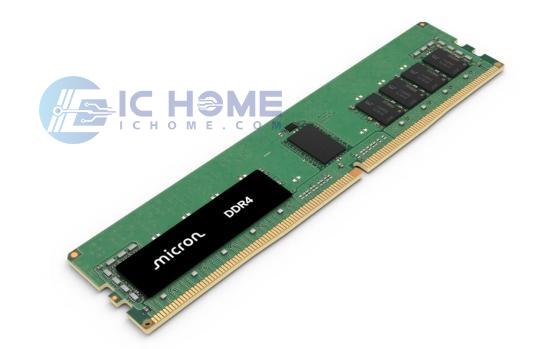Micron DDR4 Discontinuation + Component EOL Methods: Ensure a Stable and Sustainable Supply Chain
The rapid pace of technological innovation, coupled with dynamic market shifts, means that even the most advanced electronic components eventually reach their End-of-Life (EOL). For businesses reliant on these components, an EOL announcement isn't a death knell, but rather a call to strategic action. Proactive planning and preparation are essential to mitigate risks, save costs, and ensure long-term product viability. This article outlines critical steps for managing component obsolescence, especially in an era being redefined by Artificial Intelligence (AI).
The Imperative of Early Planning: Design to Sustained Supply
Effective obsolescence management begins at the design and product definition stages. Component selection during development significantly impacts a product's future iterations. This is particularly challenging for industries with extended development and qualification cycles, such as automotive, aerospace, and industrial control, where products often demand component availability for over two decades.
Choosing the right components and suppliers with a commitment to long-term availability is paramount. The lowest-cost supply channel may not be the optimal long-term choice. Reliable suppliers must demonstrate a proven transition process from EOL to long-term authorized sustainable production. Key questions to consider during design include:
- How does the component life cycle status align with the application life cycle?
- Are critical design components thoroughly documented?
- Can design files be archived to enable recreation if needed?
Understanding the Total Cost of Obsolescence
It's crucial to understand and model the costs and risks associated with obsolescence. Component EOL is far more than a post-purchase procurement issue. Consider:
- How will planned product updates or redesigns be funded?
- How will your organization calculate costs tied to long-term component procurement?
- What impact will component obsolescence have on aftermarket service commitments and your customers?
Proactive Obsolescence and Resource Management Planning
If your equipment has a long qualification, production, or service life, you will inevitably face component obsolescence. Manufacturers caught off guard risk supply chain disruptions, increased costs, and other significant setbacks. Leading companies dedicate skilled, experienced personnel to managing obsolete components. Proactive planning by buyers, component engineers, designers, and project managers can reduce or eliminate these costs and risks.
Monitoring Product Discontinuance Notices (PDNs)
Proactively monitoring component lifecycles is essential for predicting issues before they arise. Quality commercial tools can track component lifecycles, lead times, and specification changes, triggering alerts when PDNs are issued. General management databases allow users to load BOM structures, matching and highlighting PDNs affecting specified products.
It's crucial to understand if your Contract Electronic Manufacturer (CEM) has proper obsolescence management processes, as PDN notifications are often only sent to direct purchasers.
Last Time Buy (LTB) – Predicting the Unpredictable
Forecasting is not an exact science, making accurate predictions years in advance for product demand incredibly challenging. Underestimating demand can lead to premature product obsolescence and lost sales, while overestimating ties up unnecessary inventory resources. If a future redesign is planned to limit LTB costs, the opportunity cost of design, re-qualification, and valuable engineering resources must be considered.
Partnering with suppliers who have established EOL transition methods offers risk-free authorized products and the promise of continued production, providing an additional layer of security to the forecasting process.
The Criticality of 100% Authorized Supply Channels
There's a common misconception that unauthorized or "grey market" channels are the only option once the original manufacturer ceases production. Risk-free authorized aftermarket suppliers should always be the preferred choice.
The risk of counterfeit or substandard components from unauthorized channels poses a significant threat to field production yields and Mean Time Between Failures (MTBR). These channels often provide substandard or unauthorized testing, leading to issues like:
- Improper handling causing ESD damage.
- Improper storage leading to corrosion or catastrophic failure.
- Falsified datasheets or misreported test results.
- Recycled, remarket, or repackaged components disguised as new.
Original Component Manufacturers (OCMs) offer no warranty for products purchased through unauthorized channels. Authorized channels offer risk-free procurement, providing genuine security for customers to keep production lines running during shortages, allocations, and obsolescence.
The Rise of AI and its Impact on Memory Component EOL
Recent developments in the memory chip industry further highlight these challenges, particularly with the acceleration of AI technologies. Micron has announced plans to gradually discontinue DDR4 and LPDDR4 shipments in the next 2-3 quarters for client PCs, mobile devices, and data centers. This strategic shift is driven by pricing dynamics and a move towards newer process nodes like DDR5 and LPDDR5.
This transition underscores the accelerating shift towards higher-performance, lower-power memory products driven by AI. AI workloads are primarily bottlenecked by memory capacity and bandwidth. The demand for low-power, high-speed memory chips is also escalating due to data centers' immense power consumption. This massive wave of AI will transform everything, making increased memory chip capacity and more efficient memory products an inevitable trend.

ICHOME: Your Trusted Partner for Sustainable Supply
Preparing for and planning for unforeseen events is crucial. More than ever, businesses need partners who can provide risk-free support during unexpected or planned component EOL.
Looking to future-proof your supply chain in the age of AI? Contact ICHOME today to discuss your component sourcing and obsolescence management needs.




